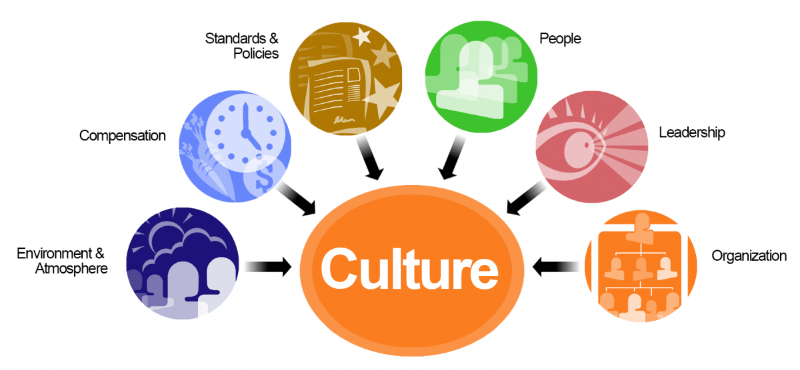Organization Culture
Introduction
Organizational culture refers to the core principles that govern and support individuals and teams. It enhances employee behavior and comprehension and contributes to a healthy workplace environment. A great organizational culture is a cornerstone to success since it helps the organization achieve its goals, increase its performance and quality, and become successful. It is critical for organizational benefit and makes employees more comfortable and productive to bring advantage and achieve company goals and objectives. The organizational structure is the framework that guides and supervises employees’ activities to fulfill the organization’s goals and offer the information needed to function efficiently for corporate advantages. The organizational structure aids personnel. The organizational structure helps workers create a practical work culture and comprehend their job responsibilities for the overall system to fulfill the organizational objectives.
Discussion
The relation between the organizational culture and the organizational structure
The organizational structure is the model or design that refers to the rules and regulations, policies, and information sharing with the company to guide the employees, whereas the organizational culture develops the employees’ values, principles, and attitudes to create a healthy environment in the workplace to work and achieve the corporate mission and vision together. The relationship between the organizational structure and culture must be optimized for the company’s success. Management must ensure that the excellent network provides practical guidance that supports employees in creating a healthy work culture to improve productivity. The organizational structure communicates the company goal to workers, and the organizational culture helps them achieve it successfully. The company plan is crucial in achieving the corporate goal and the intended result. A positive relationship with the organizational structure and culture improves communication, which aids in achieving the vision. Both responsibilities are necessary and critical for the organization’s growth.
The steps for creating an organizational culture
Developing a compelling vision- The organization must design a plan to deliver information to managers for they to make effective decisions and actions to run all departments successfully and increase the work culture.
Understanding the purpose- The purpose is the incentive that drives the organization to establish the plan and gives employees a cause to work for the organization’s benefit. Furthermore, it assesses brand image in the worldwide market.
Creating an efficient business model- Aligning a solid business model benefits personnel, gives advice to meet customer demands and desires, and works well for organizational growth. A large organizational structure generates possibilities and chances inside the organization and assists employees in maintaining a lively workplace and successfully negotiating challenges.
Value clarification- The essential aspects that encourage the organization to maintain a healthy workplace and help workers follow the laws and regulations, obey the policies for a healthy workplace, and create values that naturally accomplish success are values and principles.
Socialization strategies
Socialization strategies are an important aspect of any organization that helps people learn social skills, language, culture, and values. As a result, the individual must join the cultural group and acquire the necessary skills and information. It is a continual process that promotes learning, and individuals can change roles and learn new things based on the organization’s advantages and social roles. It supports to full-fill the following points-
Individual or collective- The social strategy assists the individual in completing new experiences and sharing them with conventional groups.
Formal and informal- These strategies enable individuals to acquire new skills via trial and error, and working under experienced personnel helps to develop the abilities needed to become an influential leader.
Random- In this phase, the person develops behavior to learn new skills and establish values and standards.
Fixed- The degree that enhances socialization gives acceptance and assists the individual in understanding the important duties of the organization.
Disjunctive– During this procedure, experienced employees and leaders assist others in learning social strategies.
Investiture– This part is important for knowing the social rules and improving behavior to keep an influential job and collaboration with the other employees.
Conclusion
The author has examined work culture and organizational structure in this part to demonstrate how important these two roles are for business growth and productivity. The organizational structure is the design or model that delivers information and advice to workers for they to make decisions and work toward the company’s growth and productivity. On the other hand, organizational culture is critical for a healthy workplace. As a result, to be successful, an organization must have both a corporate culture and an organizational structure. Creating a healthy workplace and inspiring workers to work together to achieve business goals is critical for success. For an influencing work culture, leaders must improve communication skills and interact effectively with employees to deliver relevant information and properly operate all departments for development and productivity. Planning training and building a socialization strategy among personnel is critical to attaining the future aim.




